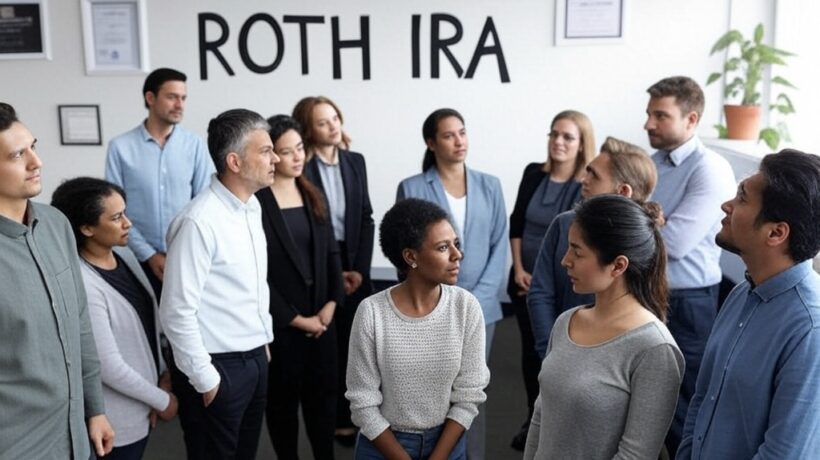Backdoor Roth IRA: The Ultimate Wealth-Building Strategy for High Earners
For high-income earners, direct contributions to a Roth IRA are off-limits due to IRS income restrictions. But there’s a completely legal way around this—the Backdoor Roth IRA. This strategy allows high earners to enjoy the benefits of tax-free growth and withdrawals without income limits holding them back.
If used correctly, the Backdoor Roth IRA can be a game-changer for retirement savings. In this guide, we’ll break down how it works, who should use it, common mistakes to avoid, and how to take it to the next level with the Mega Backdoor Roth.

What Is a Backdoor Roth IRA?
A Backdoor Roth IRA isn’t a special type of account—it’s a legal strategy that lets high earners contribute to a Roth IRA despite income limits.
How the Backdoor Roth IRA Works
- Contribute to a Traditional IRA – There’s no income cap for non-deductible contributions.
- Convert to a Roth IRA – The IRS doesn’t limit Roth conversions, so you can move funds over.
- Pay Any Taxes Due – If your contribution was post-tax and you have no other pre-tax IRA funds, the conversion is mostly tax-free.
This simple process helps high earners legally fund a Roth IRA and bypass normal restrictions.
Why Use a Backdoor Roth IRA?
A Backdoor Roth IRA is one of the best tools for long-term, tax-efficient investing. Here’s why:
✅ Tax-Free Growth & Withdrawals – Once in a Roth IRA, your investments grow tax-free, and withdrawals (after age 59½ and five years) are also tax-free.
✅ No Required Minimum Distributions (RMDs) – Unlike Traditional IRAs and 401(k)s, Roth IRAs don’t require withdrawals at age 73. This means your money can keep growing tax-free for as long as you want.
✅ Protection from Future Tax Hikes – If tax rates rise, you won’t be affected because withdrawals from a Roth IRA are tax-free.
✅ Estate Planning Benefits – Your heirs can inherit a Roth IRA and continue enjoying tax-free growth and withdrawals.
The Mega Backdoor Roth IRA: Supercharging Your Strategy
If your employer’s 401(k) plan allows after-tax contributions, you may be able to supercharge your savings with a Mega Backdoor Roth IRA. This strategy lets you contribute an extra $43,500 (2024 limit) beyond normal 401(k) limits into a Roth IRA or Roth 401(k).
How the Mega Backdoor Roth Works
- Max Out After-Tax 401(k) Contributions – Some employers let you contribute extra after-tax dollars beyond the standard $23,000 (2024 limit).
- Convert to Roth IRA or Roth 401(k) – Move these funds via an in-plan Roth 401(k) conversion or roll them into a Roth IRA.
- Enjoy Massive Tax-Free Growth – This allows for significantly greater tax-free retirement savings than a standard Backdoor Roth.
🚀 Key Benefits:
- Increase your 401(k) contributions up to $66,000 (2024 limit).
- Maximize tax-free compounding for long-term wealth.
- Combine with a Backdoor Roth IRA for even more tax-free savings.
🚨 Important: Not all employer-sponsored 401(k) plans allow after-tax contributions or Roth conversions. Check with your HR department before attempting this strategy.
Common Mistakes to Avoid
Even though the Backdoor Roth IRA is simple in theory, there are some pitfalls you need to watch out for:
1. The Pro-Rata Rule
If you have other pre-tax IRA balances (Traditional, SEP, or SIMPLE IRAs), a portion of your conversion will be taxable. To avoid this, roll pre-tax IRA funds into a 401(k) before doing a Backdoor Roth conversion.
2. Converting Too Quickly
Some investors convert their Traditional IRA to a Roth IRA immediately after contributing. It’s best to wait a few days to avoid the IRS viewing it as an attempt to bypass contribution limits.
3. Legislative Risk
The Backdoor Roth IRA and Mega Backdoor Roth have been discussed as potential targets for elimination. While they are legal now, they may not always be, so it’s best to take advantage while you can.
How to Execute the Backdoor Roth IRA Step-by-Step
✅ Step 1: Contribute to a Traditional IRA
- Make a non-deductible contribution (up to $7,000 for 2024, or $8,000 if age 50+).
- Avoid mixing pre-tax and post-tax IRA funds to prevent pro-rata rule issues.
✅ Step 2: Wait a Few Days
- Let the funds sit to avoid IRS scrutiny.
✅ Step 3: Convert to a Roth IRA
- Transfer the funds from the Traditional IRA to a Roth IRA.
- If you have no pre-tax funds, the conversion is tax-free.
✅ Step 4: File IRS Form 8606
- This form reports your non-deductible IRA contributions and Roth conversions.
- Ensures you don’t pay taxes twice on the converted funds.
Final Thoughts: The Secret to Tax-Free Wealth
For high earners, the Backdoor Roth IRA and Mega Backdoor Roth IRA are essential strategies to maximize tax-free retirement savings. By following the right steps and avoiding common mistakes, you can take full advantage of these powerful wealth-building tools.
💡 Action Plan: ✅ Check your IRA balances to avoid the pro-rata rule. ✅ See if your 401(k) allows after-tax contributions for a Mega Backdoor Roth. ✅ Consult a financial advisor or tax professional to ensure compliance.
By consistently using the Backdoor Roth IRA, you can build a tax-free retirement fortune and secure your financial future. 🚀
Managing money can feel overwhelming, especially for small business owners and individuals juggling expenses, savings, and investments. But with the right personal wealth management, you can take control of your finances and build long-term security. Already savvy with investing, you can learn about diversified portfolio here. You can learn more about 401k here and Index Funds here.





